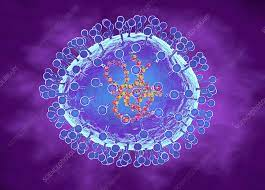Please click the frequently asked questions below for further information and IPC precautions required:
-
What is Human Metapneumovirus?
Human metapneumovirus is a virus belonging to the paramyxovirus family along with respiratory syncytial virus (RSV).
Infection can cause upper and lower respiratory disease in people of all ages but especially the young and elderly.

-
How does it spread?
Transmission is highest during the winter months via the Droplet Route.
It is most likely spread from an infected person to others through:
- secretions from coughing and sneezing
- close personal contact, such as touching or shaking hands
- touching objects or surfaces that have the viruses on them then touching the mouth, nose, or eyes
-
What are the symptoms of Human Metapneumovirus?
Symptoms include:
- Cough
- Fever
- Shortness of breath
- In more serious cases bronchitis and pneumonia which can be fatal especially in people with weakened immune systems.
-
Why is this important?
If NIAS staff are aware that the patient has a suspected or confirmed case this should be communicated to the Control Room (Emergency or Non-emergency as appropriate) and the staff in the receiving unit when transferring the patient to ensure effective patient care and management.
-
IPC Precautions
- Droplet precautions should be used
- Hand Hygiene should be completed as per the 5 moments in line with usual practice.
- Eye protection should be risk assessed for any concern regarding a splash risk.
- A Fluid Resistant Surgical Mask should be worn.
- Gloves and Aprons should be worn.
- The patient should be transported via ambulance with no other patients present if they remain symptomatic.
- Laundry should be treated as contaminated, placed into an alginate bag and placed into a red laundry bag.
-
What cleaning is required?
All equipment and the ambulance should have an in-between patient clean, paying particular attention to touch points.
-
Do staff need prophylaxis or follow up?
If appropriate PPE is worn there is no follow up required for staff.
If staff have had a breach in PPE they should remain vigilant for any signs or symptoms. There is no prophylaxis required.




